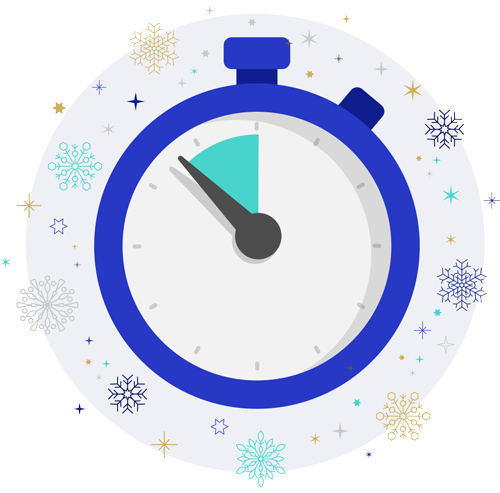Meet the Gonchigar Family
How is Indian music and dance similar and different than other music you've heard before?
Whether for religious, historical or familial purposes, it's common to express yourself through music or dance. The Gonchigar family does just that.
Transcript
[Abby Brown] Music and dance are sometimes considered a universal language, or a way for people to communicate and relate to each other without even using any words. My friend Pragnya is an Iowan who teaches sampradaya dance to young Iowans. But her students are learning so much more than dance. They're learning how to tell a story. Because these dances and stories are from India where they speak lots of different languages.
(Prognya is in a traditional Saree of royal blue silk with gold trim and a gold belt.)
(traditional song from India)
[Pragnya] India is known for its rich culture and heritage. And every state in India have their own way of celebrating festivals or occasions and the type of clothing varies from one state to another.
(traditional song from India)
Basically in this art form or any traditional art form, we convey stories in the form of facial expressions and movements. So basically this dance is like a poetry in motion. When you connect the people by saying the stories and narrating stories, we call it them Mudras, which are nothing but the hand movement and the facial expressions. We use different types of emotions like for example you want to show the beauty of the nature and the things around you.
(With her head tilted up toward the sky and a smile on her face, Pargnya uses her right hand to make a circular motion in front of her face.)
(Pragnya does a traditional Indian bow. Her palms held together in a prayer as she bends at the waist.)
[Abby] Alright these are the young boys of the family so tell me what your name is and how old are you?
[Akul] My name is Akul and I am 12 years old.
(Akul is wearing a traditional Achkan coat in golden yellow with dark red pants.)
[Abby] And how about you sir?
[Anmol] My name's Anmol and I'm nine years old.
(Anmol is wearing a traditional Achkan coat in hunter green with white pants)
[Abby] And you guys were born and raised in Iowa but your mom and dad come from somewhere else right? Can you tell me about that place?
[Akul] They come from a state in India called Karnataka.
[Abby] Okay, and you guys know a lot about India because your mom and dad have taught you right? And so I see you have some instruments and you're wearing some special clothes. Can you tell me about the clothes you're wearing?
[Akul] It's like the traditional clothes that they wear in Karnataka there in India.
[Abby] So this is the types of clothes that you'd wear to school and you might wear to the store or are these special?
[Akul] They're mainly used for like events.
[Abby] Okay.
[Anmol] Like special occasions.
[Akul] So we know another language called...
[Anmol] Kannada.
[Abby] And that would be the language that your mom and dad spoke when they lived in India, right?
[Anmol and Akul in unison] Yes.
[Abby] And how did you learn that language?
[Anmol] They just taught when we were little so then we would just copy them except we didn't know what they meant by that.
[Abby] Okay, so you've just kind of grown up knowing both English and Kannada, right?
[Akul] Yes.
[Abby] And you're learning more about that language, you're taking classes, right?
[Anmol] Yeah.
[Abby] And what are you learning now?
[Akul] We're learning how to write and read the language, Kannada.
[Akul] So there's many different types of instruments in India and this is one of them. It's an Indian drum which is called mridangam, and you play it with your hands sitting down.
(Akul holds a mridangam drum on his lap. It is a long, two-headed drum. It is wrapped in an orange, silk fabric.)
[Akul] I learn these Indian instruments online right now. My mridangam teacher's name is Bhargava. They live in India so when I visit India I get to visit my teachers there.
(Akula plays the mridangam drum)
(Anmol plays the Indian violin)
[Anmol] This is the Indian violin. It's like a regular violin, where you have a bow and a violin, except you sit down like this and then you have to use oil so then you could slide fast.
(Anmol plays a traditional Indian tune on the violin)
[Akul] It feels good to know many things about both from India and from where I live right now.
(Akula sings a traditional Indian song.)
[Abby] Pragnya and I are practically neighbors. Through the story of her song and dance, I learned so much about her cultural heritage. And Iowa is full of stories like hers. Start to notice the dances you see and the music you hear. And ask questions about the stories that they tell.
(The Isiserettes dance on stage in an amphitheater.)
(A Meskawki tribe member dancing.)
[Abby] And ask your own family about the dance and music of your ancestors. You never know the grown-ups in your family might be able to teach you some great moves!
Funding for FIND Iowa has been provided by The Coons Foundation, Pella and the Gilchrist Foundation.
